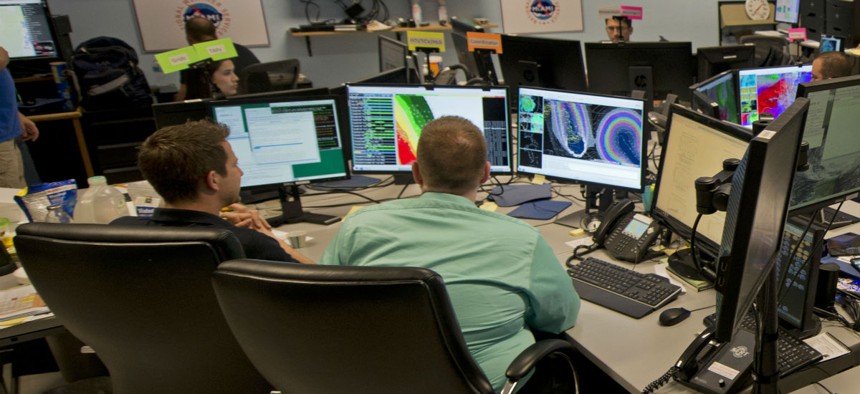National Weather Service Develops New Career Path for Meteorologists
Initiative will help aspiring forecasters advance their careers while relieving the burden of administrators in charge of hiring and promoting.
The National Weather Service is streamlining the career paths of aspiring meteorologists after a recent report revealed the current advancement process is inefficient and leaves some employees ill-prepared for higher-level positions.
By clearly defining a career ladder, NWS is aiming to give its forecasters a more holistic experience and a better idea of how to move up within the agency. The new system will also remove many of the burdens administrators face when hiring and promoting internally.
“By implementing a career ladder, you do a bunch of things that provide flexibility for both the forecasters and the management teams at the forecast offices,” Kevin Cooley, director of the Office of Planning and Programming for Service Delivery at NWS, told Government Executive. “We gain a lot of flexibility in… the mechanisms we can use to place people into positions that best fit their skills and experience, and the rate at which individuals acquire skills and experience.”
The career ladder is still in the planning stage, but NWS will eventually build a public site that sheds light on the program as it’s developed and tested, said the agency’s acting public affairs director, Susan Buchanan.
The initiative comes after the National Oceanic and Atmospheric Administration, the parent agency of NWS, released a two-year analysis of the organization’s operations and workforce on Tuesday.
The report, undertaken by McKinsey and Company from 2015 to 2016, offered dozens of recommendations for improving NWS, and agency leadership picked three to focus on initially. In addition to outlining a career ladder for meteorologists, NWS will also look to collaborate more on forecasting processes across agency offices and automate weather balloon launchers at select sites.
Today, employees at NWS climb the organizational ladder based primarily on the length of time they’ve spent at a given pay grade, according to the report. This leaves little room for an individual’s performance to affect his or her success within the agency. In addition, a system based solely on tenure may not ensure employees receive adequate exposure to the various elements of the forecasting process by the time they’re called on to lead such efforts.
Implementing a standardized promotion system that gives people a thorough understanding of the forecasting process “allows for the experience and qualifications and performance of the individual to be the predominant factors in determining progression up the career ladder,” said Cooley.
The initiative is also designed to lighten the load of the administrators who are responsible for hiring and promoting people at NWS. As it stands, filling vacant positions requires employees to go through a recruitment and hiring process that can eat up a significant amount of time and resources, according to Cooley. Laying out performance and experience goals for each pay grade will help qualified employees stand out, and allow officials to fill vacancies more efficiently.
“When you combine applying hiring processes to bringing new people into [NWS] with career ladder processes to enable the movement of people within [NWS],” Cooley told Government Executive, “you’re able to have your cake and eat it too.”




